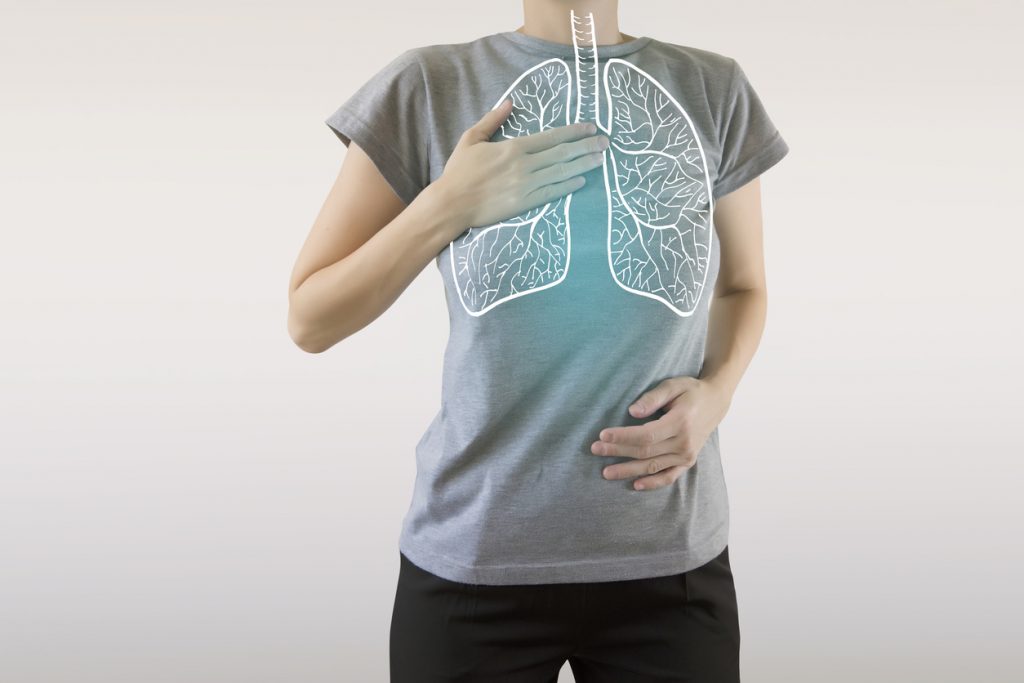

Lung disease kills 4 million people every year. It kills more people than any other disease worldwide. Lung disease is a broad term that encompasses multiple conditions that prevent your lungs from working properly. October is Healthy Lung Month. Let’s use this time to learn more about our lungs and some of the disorders that threaten their health.
Your lungs are a pair of air-filled organs located in your chest. Each lung is made up of smaller sections called lobes. Your right lung has three lobes and your left lung has two lobes. The lungs are part of your respiratory system, a group of organs and tissues responsible for bringing fresh air into your body and expelling waste gases, mainly carbon dioxide, out of your body.
There are many conditions that can affect your lungs, but they are typically divided into three main categories: airway diseases, lung tissue diseases and lung circulation diseases. Each group of diseases impacts the lungs in a different way.
Airway diseases primarily affect the tubes, or airways, that carry oxygen and waste gases into and out of the lungs. Asthma and chronic obstructive pulmonary disease, or COPD, are examples of airway diseases of the lungs.
With asthma, your airways become inflamed and swell, and often produce excess mucus, making it difficult to breath. The most common conditions associated with COPD are chronic bronchitis and emphysema. Chronic bronchitis is inflammation of the bronchial tubes, the airways that carry air to and from the air sacs, or alveoli, in the lungs. Emphysema involves the destruction of the alveoli. Smoking is the most common cause of COPD.
Lung tissue diseases affect the structure of the lung tissue. With these diseases, the lungs are unable to fully expand as you breathe due to inflammation and scarring. This makes it difficult for your lungs to take in oxygen and remove carbon dioxide. Pulmonary fibrosis and sarcoidosis are examples of lung tissue diseases.
Pulmonary fibrosis is a condition in which the lung tissue becomes scarred, thickened and stiff. The scar tissue makes it difficult for the lungs to open up and take in air. With sarcoidosis, your immune system cells clump together and form granulomas, or small areas of inflammation. This can occur in any organ of your body, but it most commonly affects the lungs.
Lung circulation diseases impact the blood vessels in the lungs. They most often involve clotting, scarring or inflammation of the blood vessels. Pulmonary hypertension is a common lung circulation disease. Pulmonary hypertension develops when the pressure in the arteries leading from the heart to the lungs increases. If the pressure becomes too high, the arteries in the lungs can become narrow, restricting blood flow to the lungs.
Lung cancer is another common disease that affects the airways and tissues of the lungs.
Lung cancer is the leading cause of death in the US. It makes up almost 25 percent of all cancer deaths. It is the second most commonly diagnosed cancer in both men and women in the US, excluding skin cancer. In men, prostate cancer is more common, and in women, breast cancer is more common. People who smoke are at the highest risk for developing lung cancer.
Each lung disease has its own set of signs and symptoms, but there are some symptoms that are common to several disorders. These include: shortness of breath with activity; chronic cough; chest tightness; wheezing; rapid, shallow breathing; hoarseness; recurring respiratory infections and fatigue. In rare cases, lung cancer can grow into the nearby blood vessels and cause severe bleeding.
To determine if you have a lung disease, your doctor will perform a physical exam during which he or she will listen to your lungs and breathing. The doctor will review your personal and family history, including your smoking status, risk factors and the severity of your symptoms. Your doctor may use certain tests and procedures to help in making the diagnosis.
Tests and procedures your doctor may employ include: chest x-ray, CT scan, pulmonary functions tests, pulse oximetry, arterial blood gas, bronchoscopy and lung cancer screening.
Treatment depends on the type of lung disease, but it may include medications such as inhaled corticosteroids, which reduce swelling and inflammation of lung tissue, and oral or intravenous medications. Treatment for lung cancer may include surgery, chemotherapy, radiation therapy, targeted drug therapy and immunotherapy.
There are some steps you can take to reduce your risk for lung disease and keep your lungs healthy:
- Don’t smoke – Smoking cause chronic inflammation in the lungs, destroys lung tissue and may trigger changes that develop into lung cancer.
- Avoid exposure to indoor pollutants – Secondhand smoke, chemicals in the home and workplace and radon can cause or worsen lung disease.
- Minimize exposure to outdoor pollutants – Avoid being outdoors for long periods when pollution is high and air quality is poor.
- Prevent infection – Wash your hands often and avoid crowds during cold and flue season. Get vaccinated against the flu and ask your doctor if the pneumonia vaccine is right for you.
- Exercise – Regular physical activity can help keep your lungs – and heart – healthy.





Leave a Reply